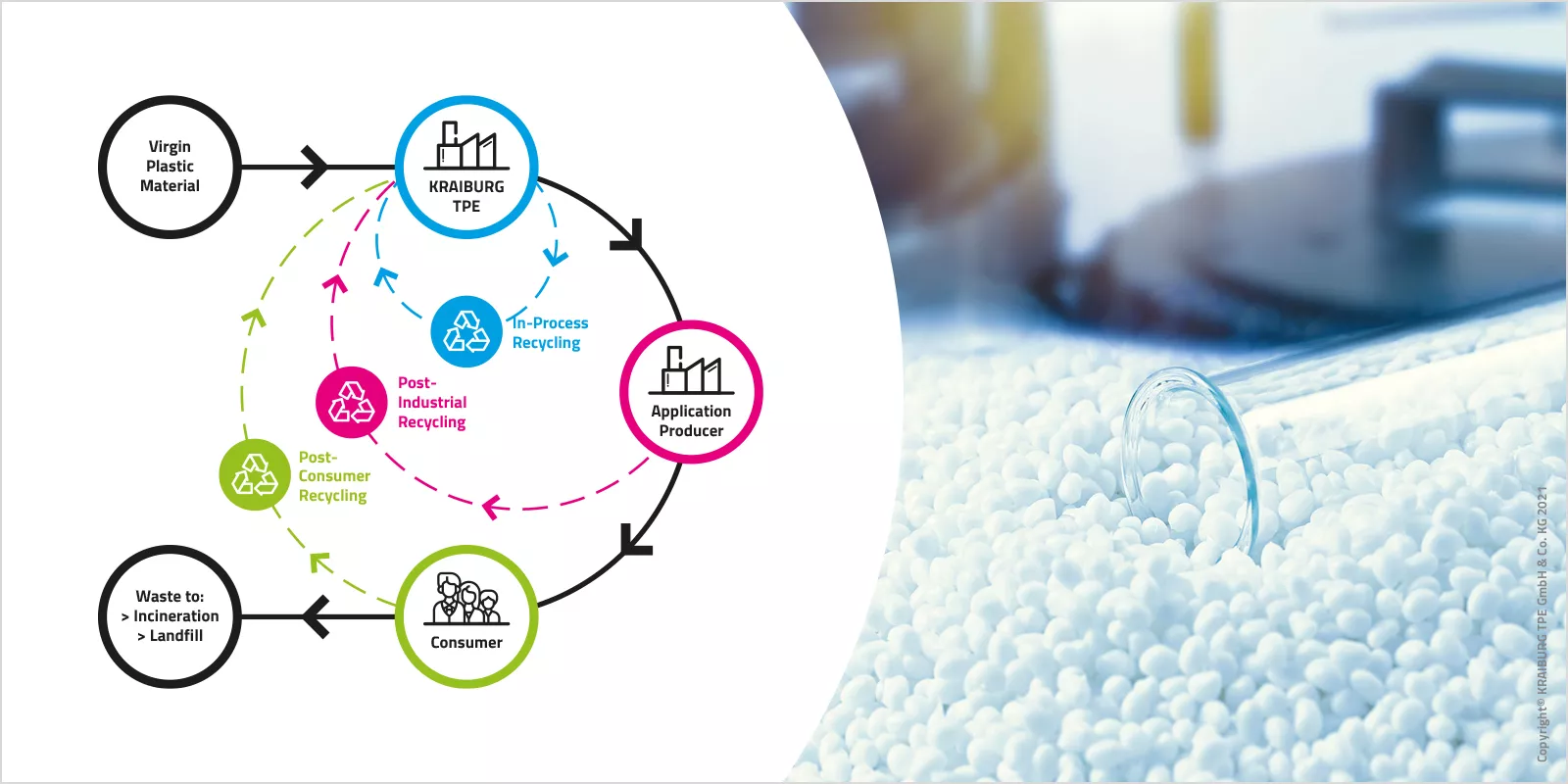MATERIALS DERIVED FROM RECYCLING UNDER THE MICROSCOPE: POST-INDUSTRIAL, POST-CONSUMER AND IN-PROCESS RECYCLED MATERIALS
MATERIALS DERIVED FROM RECYCLING: POST-INDUSTRIAL RECYCLATES, POST-CONSUMER RECYCLATES AND IN-PROCESS RECYCLED MATERIALS
The use of plastic recyclates, i.e. materials obtained from recycling activities , has been rising continuously in Germany for several years now. According to the BKV study "Material flow analysis plastics in Germany 2019", in 2019, a total amount of 14.2 m t of plastic materials, including recyclates, were reportedly processed into material applications, such as packaging, vehicles, construction materials or household items. While the overall amount of plastics being processed in 2019 was almost 1 % below the level of 2017, the input of recyclates increased in 2019 by 10 % as compared to 2017, accounting for more than 1.9 m t.
Recyclates can originate from different sources of plastic waste. When it comes to recycled materials input in TPE compounds, it has to be noted that not every recyclate is suitable for being used in every TPE.
SOURCE OF RECYCLATE
POST-INDUSTRIAL MATERIAL
Post-industrial material (also referred to as “Pre-consumer material”) refers to material that is separated from the waste stream during a manufacturing process, as defined by DIN EN ISO 14021:2016.
Post-industrial material is usually sorted and collected separately. The material composition is therefore well-known and its processing relatively easy. Recyclates resulting from post-industrial materials are considered of high and constant quality.
POST-CONSUMER MATERIAL
As defined by DIN EN ISO 14021:2016, this is all about material generated by households or by commercial, industrial and institutional facilities in their role as end-users of the product which can no longer be used for its intended purpose. Returned material from the supply chain is also included here.
TPE WITH DIFFERENT SOURCES OF RECYCLATES
POST-INDUSTRIAL RECYCLATE – PIR TPE
The term post-industrial recyclate (PIR) is used in case a material is produced at least in part from post-industrial materials.
Examples: Waste material from plastic foil extrusion is used in the manufacturing process of thermoplastic elastomers.
IN-PROCESS RECYCLED MATERIAL
Own production waste is recycled into the manufacturing process.
Example: Purgings, sprues and scrap parts separately collected during production is shredded and recycled into the manufacturing process of thermoplastic elastomers.
POST-CONSUMER RECYCLATE– PCR TPE
The term post-consumer recyclate (PCR) is used in case a material is produced at least in part from post-consumer materials.
Examples: PP recyclate originating from household packaging waste from the German “yellow bag” is used in the manufacturing process of thermoplastic elastomers.
While in the medical sector recycled materials can only be used for limited areas of application, they are gaining ground in the automotive, industry and consumer sectors.
From a manufacturer's perspective, we strongly expect demand to continuously rise across the board, as will the (minimum) requirements for the percentage of recycled content in individual compounds. Our advice is therefore to address this topic as early as possible.
Josef Neuer
Autor | Head of Product Management EMEA at KRAIBURG TPE

Phone: +49 8638 9810-373
E-Mail: josef.neuer@kraiburg-tpe.com

